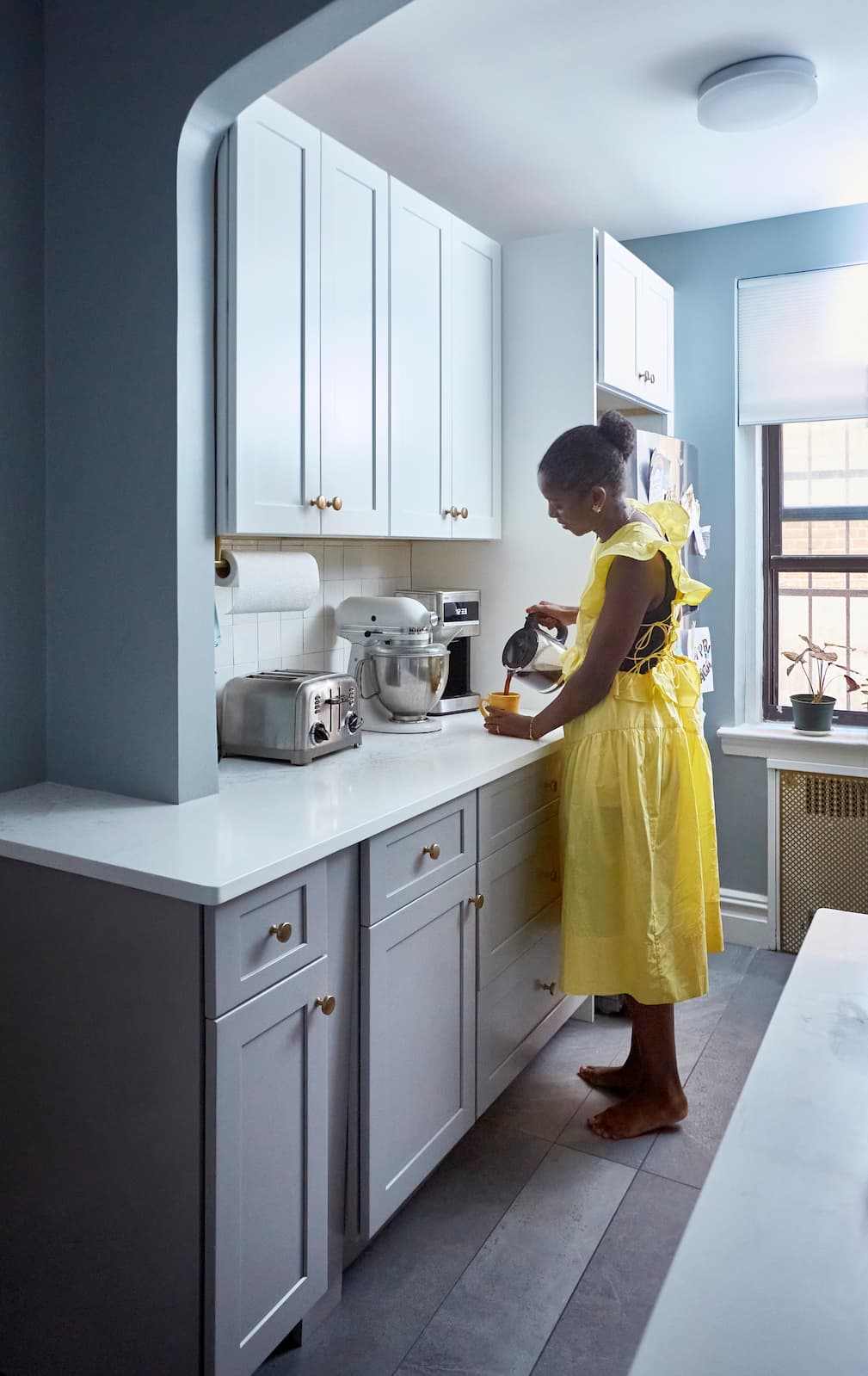
Process
How To Install Kitchen Cabinets
09.29.2021

In This Article
Renovate confidently with Block
Get Your EstimatesYou’re finally ready to turn your renovation dreams into reality, but what now? Traditionally, the next step would be to hire a designer and contractor, each equipped with their own teams and spheres of work. This strategy, known as “design-bid-build,” appoints the owner of the project as its leader and middleman between multiple points of contact.
Alternatively, you can hire a singular entity that combines both processes, a “design build firm.” In this situation, the team designing your space is also the team building it. What’s the difference between these two options, and which is the best for your project?
Closing the gap between design and construction creates a smooth flow of work and maximum collaboration for your renovation. More coordination yields better solutions and can even lower the amount of time necessary for construction. When the two teams work together form start to finish, builders can prep the job site and work on specific elements while the design process is underway — and time is money. While design-build may have a steeper price tag upfront, the increased coordination it offers can lower the number of change orders, decreasing additional spend.
In addition, a design-build firm brings a certain level of clarity to the delegation of tasks. No longer is the homeowner the bridge between two parties. Instead, he or she works directly with the project leader, who is also the singular point of contact and responsibility.
Design-build definitely has its perks, but you should also consider the danger of bringing all a project’s risks under one roof. The firm is responsible for all the aspects of a renovation, from its assessment all the way to subcontracting. Before handing off so much power to one company, make sure to do your research. Ask to see portfolios and look for many references.
Working with a design-build firm often means giving up a bit more choice and control. Depending on your experience or preferred style of management, this may be beneficial. If you don’t have the time or desire to micromanage all aspects of your renovation, hiring a design-build firm can take a large load off your shoulders.
Not all projects will require a designer or architect, in which case, you can save a lot of money by choosing only a general contractor to work with. The National Kitchen & Bath Association finds that only 22 percent of home kitchen and bath renovations utilize such professional resources.
Projects that aren’t considered “gut renovations” and don’t require structural changes typically do not necessitate architectural assistance. Keep in mind that changing the plumbing layout of a kitchen or bathroom does count as a structural change. Regardless, homeowners often enlist the help of a designer to make informed decisions regarding their space that can save money down the line.

Renovate confidently with Block
Easily compare quotes from top quality contractors, and get peace of mind with warranty & price protections.
Thousands of homeowners have renovated with Block

4.5 Stars (100+)

4.7 Stars (100+)

4.5 Stars (75+)

Process
How To Install Kitchen Cabinets
09.29.2021

Process
The Best Apartment Remodeling Tips for Los Angeles
07.24.2021

Process
5 Apartment Remodeling Tips for a Smooth Renovation in New York City
07.21.2021

Cost
What’s The Real Cost To Replace Flooring In A Kitchen?
07.08.2021

Design
5 Tech Tools That Make Designing Your Dream Bathroom a Breeze
06.04.2021
Renovate confidently